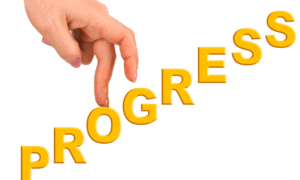There is something about reflecting on the past and dreaming about the future that can get us excited. When we specifically involve our family members in these thoughts, it can be even more remarkable.
Now if only we could make sure that the past memories and future dreams were all positive!
We start worrying about our offspring before they’re born, and sometimes even before they’re conceived. But for simplicity’s sake, let’s say it all starts at birth.
We also worry about what will happen to them after we’re gone. Of course after we’ve passed away, there isn’t really much we can do about anything anymore.
For practical purposes, the moment a baby is born, they become a future heir, and upon the death of a parent, they become the true heir.
During the time when a parent and child are both alive, there are many stages that they go through as they move from “baby” to “heir”.
Not All Distinctions Are Clear
Unlike birth dates and death dates, the movement from one stage to the next is usually less clear. Let’s look at some examples.
When does one move from “baby” to toddler, to pre-schooler? Do these stages always last as long as we hoped, or are they too long, or too brief? Do the child and parent agree on when they moved from one stage to the next?
Some of the periods are quite clear, “high school student”, for example, or undergraduate in college, with specific start and end dates.
There are overarching periods too, like “dependent”, and that one can become a bit ambiguous too. Parents usually say they want their offspring to become independent, but sometimes their actions make it look like they’re unsure how to go about that.
If the family owns a business, there’s a whole new set of stages, like part-time employee, summer intern, full-time employee, whether starting in the mailroom, or otherwise.
Then there are other business roles, like manager, VP, leader, board member, owner, CFO, CEO. Some of the distinctions are clear, some overlap, some do not apply, and a whole bunch of others can be added too.
Business Roles, Family Roles
Outside the company there are even more important roles, even if they do not come with a business card and title.
We don’t like to think about the time when there will be a role reversal, and the child will become the caretaker, and the parent will be the dependent. It is, however a reality that most of us will face. And it might be sooner than we expect.
There is a natural progression to all of this, but it isn’t always smooth, and in fact it can be quite “lumpy”, not to mention bumpy.
If you are concerned about your multi-generation legacy, as I believe you should be, it makes sense for both generations to be on the same page, but often they are not.
I have done some gross over-simplification here as we have gone along, only looking at a one child, one parent scenario.
Yes, I know that things are usually even more complex, involving two parents, and multiple children. My point is that even the one-parent-one-child situation is rarely simple.
I thought about calling this post “From Baby to Heir, and Everything in Between”, but shortened it. I want to highlight that there is a fixed period of time, while both generations are alive, where you can both truly work on the relationship.
Natural Order of Things
The relationship will NATURALLY change, from dependent to caretaker, from child to former child. I like the word “offspring”, as it covers both, and hopefully gets the parents to stop thinking of adults in their 30’s, 40’s and 50’s as “kids”.
The parent goes from leader, in the “one up” position, through a period of “equal” adults, and then finally to dependent, or “one down”.
Not thinking about this doesn’t change it, it only delays your doing what needs to be done.
Are there some relationships in your family that are still stuck in a framework that is no longer suitable, and is unsustainable?
What are you going to do about it? These conversations need to happen, however difficult they are to get started.








